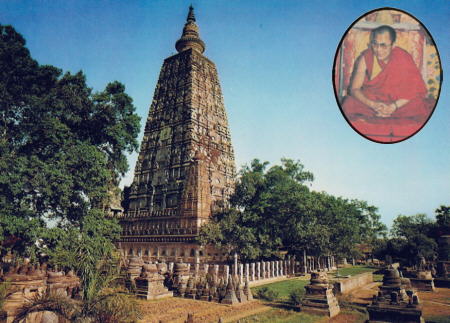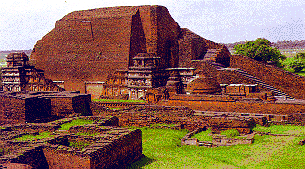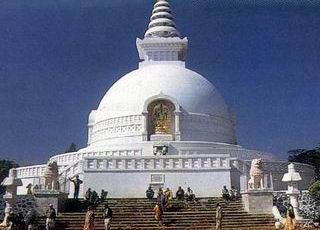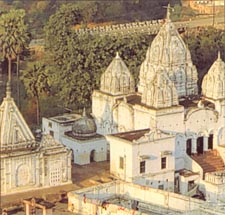Bodhgaya
is one of the sacred places for the Buddhists as well as for
the Hindus. Here under the Bodhi Tree, Gautama attained
supreme knowledge to become Buddha, the 'Enlighten One'.
L ord
Buddha the gentle colossus who founded the first universal
religion of the world, worked and lived much of his life in
Bihar though he was born in Kapilavastu, now in Nepal. Most of
the major events of his life, like enlightenment and last
sermon happened in Bihar. The state's name originated from 'Vihara'
meaning Buddhist and Jain monasteries, which abounded in
Bihar.
ord
Buddha the gentle colossus who founded the first universal
religion of the world, worked and lived much of his life in
Bihar though he was born in Kapilavastu, now in Nepal. Most of
the major events of his life, like enlightenment and last
sermon happened in Bihar. The state's name originated from 'Vihara'
meaning Buddhist and Jain monasteries, which abounded in
Bihar.
Several
centuries after Buddha's passing away, the Maurya emperor
Ashoka (234-198 BC) contributed tremendously towards the
revival, consolidation and spread of the original religion. It
is the monasteries Ashoka built for the Buddhist monks and the
pillars erected to commemorate innumerable historical sites
associated with the Buddha's life, mostly intact to this day
that helped scholars and pilgrims alike to trace the life
events and preaching of a truly extraordinary man.
The
Buddha attained enlightenment in Bodhgaya, under the Bodhi
tree, 10 km from Gaya, the ancient Hindu pilgrimage center.
The tree from the original sapling still stands in the temple
premises. The magnificent Mahabodhi temple in Bodhgaya is an
architectural amalgamation of many centuries' cultures and
many heritages that came to pay their homage here. The temple
definitely has architecture of the Gupta and later ages,
inscriptions describing visits of pilgrims from Sri Lanka,
Myanmar and China between 7th and 10th century AD. It is
perhaps still the same temple Hiuen Tsang visited in 7th
century.
How
to get there
Air
Nearest
airport is Gaya 12 km. However convienent airport is Patna.
Patna is connected to Bombay,Calcutta,Delhi,Ranchi &
Lucknow Rail The nearest railhead is at Gaya, 12 km.
Road
Bodh
Gaya is connected by road to Gaya 12 km, Nalanda 62 km, Rajgir
46 km, Patna 152 km, Varanasi 215 km, Calcutta 482 km.
In
and around
Mahabodhi
Temple
Is an architectural amalgamation of many cultures. The temple
bears the stamp of the architecture of the Gupta dynasty and
subsequent ages. On the walls of the temple, one sees Buddha
carved in different aspects, and in the sanctum sanctorum, a
colossal Buddha, is seen touching the ground which has
mythological significance in the Buddhist lores.
Shaivite
Monastery
That has a cluster of four temples. Surrounded by enchanting
greenery and marked by architectural marvels, these temples
have several Samadhis (commemorative stones) in their
vicinity.
Jagannath
temple
Which is dedicated to Lord shiva and has the statue of the
deity carved in glistening black stone.
Archaeological
Museum
One into the age of Buddha's centred art forms. The Buddhist
sculpture collection from 1st century BC to 11th century AD
is housed here at one place. Reflected through several art
forms, it is more like a treasure house of artistic
expression









